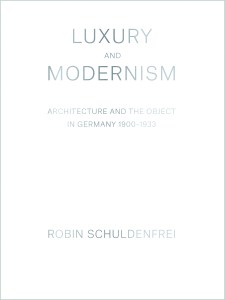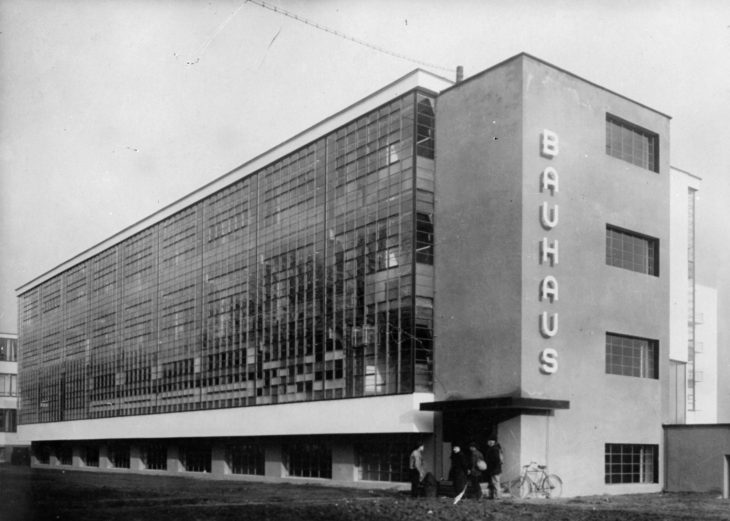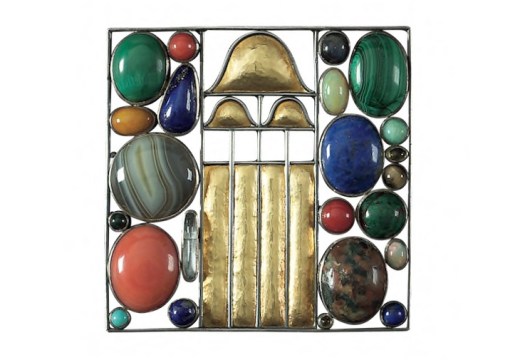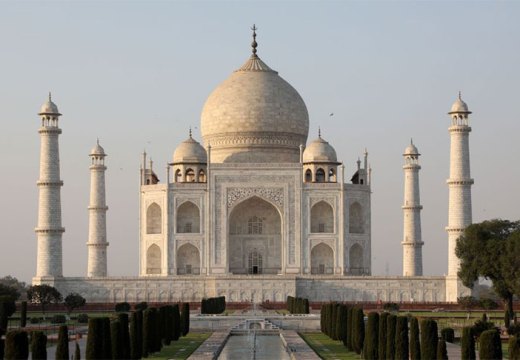Walter Gropius, the founding director of the Bauhaus, recalled how ‘young people flocked to us from home and abroad, not to design “correct” table lamps, but to participate in a community that wanted to create a new man in a new environment’. The Bauhaus, founded in Weimar in 1919, promised a radical, utopian transformation of the very fabric of life: the entire world would be redesigned for the better. In Luxury and Modernism [published by Princeton University Press], Robin Schuldenfrei punctures the idealistic, lofty, socialist rhetoric of the Bauhaus’s artist-craftsmen. The Bauhaus, she reveals, imposed an elitist, aristocratic notion of taste on the masses, who largely didn’t want it. It is an argument that the late Tom Wolfe made in From Bauhaus to Our House (1981) when he dismissed Gropius’s purported populism by christening him the ‘Silver Prince’; the Bauhaus was a corporate machine, or ‘Utopia Limited’.
 ‘Retailers laughed,’ recalled the former Bauhaus student Wilhelm Wagenfeld of the school’s ideologically driven outputs. ‘These designs which looked as if they could be made inexpensively by machine techniques were, in fact, extremely costly craft designs.’ Wagenfeld’s ‘Bauhaus lamp’ from 1924 was one such expensive and handmade object that proved impossible to market (though it is now in production, considered an icon of modern, industrial design). The designer, like the rest of his cohort, believed that household objects should be ‘cheap enough for the worker and good enough for the rich’. The irony of the Bauhaus was that the things they produced were luxuries, expensive prototypes that were impossible to mass-produce and therefore out of reach of the workers that the school purported to serve. Modernism was associated indelibly with opulence.
‘Retailers laughed,’ recalled the former Bauhaus student Wilhelm Wagenfeld of the school’s ideologically driven outputs. ‘These designs which looked as if they could be made inexpensively by machine techniques were, in fact, extremely costly craft designs.’ Wagenfeld’s ‘Bauhaus lamp’ from 1924 was one such expensive and handmade object that proved impossible to market (though it is now in production, considered an icon of modern, industrial design). The designer, like the rest of his cohort, believed that household objects should be ‘cheap enough for the worker and good enough for the rich’. The irony of the Bauhaus was that the things they produced were luxuries, expensive prototypes that were impossible to mass-produce and therefore out of reach of the workers that the school purported to serve. Modernism was associated indelibly with opulence.
Schuldenfrei does not dwell on the early, utopian years of the Bauhaus, a period of cultish optimism, preferring instead to examine the later influence on the school of the electrical company AEG and the work of the Werkbund. It seems unlikely that one would find any evidence of the Bauhaus’s revolutionary fervour in an electricity showroom or Werkbund window display, but it is to those traditions that the Bauhaus looked when they sought a new alliance with industry. ‘Can’t you help me to find capitalists?’ Gropius wrote in 1922, under pressure from the increasingly right-wing Thuringian state government that funded the Bauhaus to contribute to these costs by collaborating with big business. He wrote unsuccessful begging letters to Henry Ford, John D. Rockefeller, William Randolph Hearst and Paul Warburg.
The 1923 Bauhaus Exhibition marked the turning point towards a new era of pragmatism. Gropius hoped it would demonstrate how the student workshops could become indispensable ‘laboratories for industry’. The artisanal spirit of the Bauhaus would humanise the cold, technological ethos of the factory. ‘The artist possesses the ability to breathe soul into the lifeless product of the machine,’ Gropius told his students, ‘and his creative powers continue to live within it as a living ferment.’ This was not without controversy among students and with colleagues, who felt compromised by Gropius’s new commodity fetishism. ‘We now have to aim at earnings – at sales and mass production!’ Lyonel Feininger complained in a letter to his wife. ‘But that’s anathema to all of us and a serious obstacle to the development process.’
The 1923 exhibition, a critical if not commercial success, centered on the Haus am Horn, the school’s first architectural achievement, a startling, flat-roofed model home designed by the painter Georg Muche and furnished with Marcel Breuer tubular furniture and other designs from the student workshops. It was a house of the future, full of AEG-designed modern conveniences, and therefore a luxury dwelling available only to millionaires; even the sponsors told Gropius to ‘rein in [his] fantasies’. The architect glossed over the downsizing of the school’s ambitions in the new politics of the time when he acknowledged that his own house, on the Bauhaus’s new campus in Dessau, with its appliance-filled kitchen, was something of an extravagance. ‘Today a lot still functions as luxury,’ Gropius wrote in 1930, by which time he had resigned from his post, but that ‘will be the norm the day after tomorrow!’
His utopianism seemed disingenuous, an early example of the false promise of the trickle-down effect. Schuldenfrei notes that Gropius edited an accompanying photograph, used to illustrate his sumptuous bathroom, by erasing the richly veined marble of the double sink so that it looked like cheaper porcelain. Gropius was succeeded by the fervent communist Hannes Meyer, whose short tenure cemented the school’s reputation as a hotbed of ‘cultural bolshevism’. When he was replaced in 1930 by Ludwig Mies van der Rohe, to whom Schuldenfrei devotes her final chapters, the students went on strike in protest at the appointment; several were expelled and the school was temporarily closed. Mies had a reputation as a servant of the bourgeoisie, for whom he designed luxurious private houses. His German Building Exhibition of 1931 demonstrated his ethos of simple, solid luxury, and critics staged a counter-exhibition, the Proletarian Building Exhibition, which juxtaposed poverty-stricken rooms next to luxurious ones.
After the Bauhaus was finally closed by the Nazis in 1933, it was in the United States where Mies put the Bauhaus’s revolution into action, using modernism – the International Style, as a MoMA exhibition dubbed it – to create a new world. What resulted was an architecture and design that was co-opted by big business and became the corporate language of power: a lexicon that spoke of globalisation and world domination by America. The glass tower that Mies proposed in 1920s Germany – whose transparency heralded a new, inclusive, socialist world – was finally realised on the streets of Manhattan in the smoked windows of the Seagram building, which defined a new vernacular of American power, and is echoed in the gold-accented façade of Trump Tower.
Luxury and Modernism: Architecture and the Object in Germany 1900–1933 by Robin Schuldenfrei is published by Princeton University Press.
From the July/August 2018 issue of Apollo. Preview and subscribe here.
Unlimited access from just $16 every 3 months
Subscribe to get unlimited and exclusive access to the top art stories, interviews and exhibition reviews.














![Masterpiece [Re]discovery 2022. Photo: Ben Fisher Photography, courtesy of Masterpiece London](http://www.apollo-magazine.com/wp-content/uploads/2022/07/MPL2022_4263.jpg)
Has the Fitzwilliam got its rehang right?